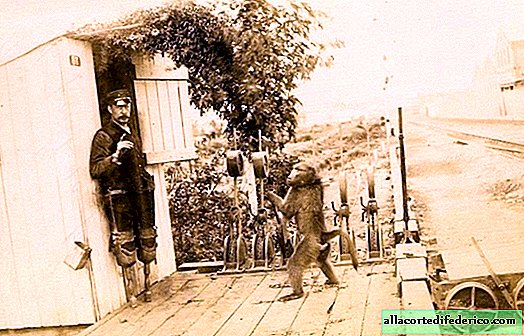Who invented the bike
At first glance it seems that inventing a bicycle was easy. There’s even a saying: "Do not reinvent the wheel." True, she says that it makes no sense to invent what is already there. And how did it happen that two-wheeled transport appeared at all? This is preceded by a long story in which there is a place of mistrust, and brilliant insights, and phenomenal success. But first things first.
Bicycles came up from behind a volcano in Indonesia
The first known constructions of a wheeled vehicle driven by human power appeared long before the bicycle became a practical mode of transport. For example, in 1418, an Italian engineer Giovanni Fontana developed a device with human traction, consisting of four wheels and a rope loop connected by gears.

In 1813, about 400 years after Fontana built his wheeled vehicle, German aristocrat and inventor Karl von Dres began work on his version of the Laufmaschine (running machine), a four-wheeled human-powered vehicle. Then in 1817, Dres made his debut with two-wheeled transport.
Drez built his car in response to a very serious problem - the lack of real horses. In 1815, the Tambora volcano awoke in Indonesia, and a cloud of ash scattered around the world caused lower global temperatures. This affected the harvest, and many animals, including horses, died of starvation.

Drez's experiments were far from aerodynamic speed machines, which today are bicycles. Weighing 23 kilograms, this "bicycle grandfather" had two wooden wheels attached to a wooden frame. The riders sat on a soft leather saddle nailed to the frame, and controlled the transport with a wooden steering wheel. There were no gears or pedals, as cyclists simply pushed the device forward with their feet.
Drez took his invention to France and to England, where he became popular. A British trainer named Denis Johnson was selling his own version of a bicycle called a pedestrian wagon for London aristocrats. The first bikes were popular for several years before they were banned because of the danger to pedestrians on the sidewalks.
Metal instead of wood
Bicycles returned in the early 1860s with the introduction of a wooden fixture with two steel wheels, pedals and a fixed gear system. The question of who invented the bike with its revolutionary pedals and gear system is still covered in fog. A German named Karl Kech claimed that he was the first to apply pedals to a "running machine" in 1862. But the first patent for such a device in 1866 was issued to the French designer Pierre Lalman.

In 1864, before obtaining a patent for his invention, Lalman staged a public demonstration. This explains how the Olivier brothers, the children of a wealthy Parisian industrialist, decided to create their own bike. The option, proposed by the Olivier brothers and the coach engineer Pierre Michaud hired by them, went on sale in 1867 and immediately became a hit.
In 1870, metallurgy reached such a level that manufacturers were able to produce bicycle frames not of wood, but of metal - lighter and more durable. Moreover, the designers began to increase the front wheel, as they realized that the larger it is, the further you can move with one pedal rotation. A bicycle enthusiast could get a model with a wheel as large as his legs allowed.

But this is a completely different story.

















